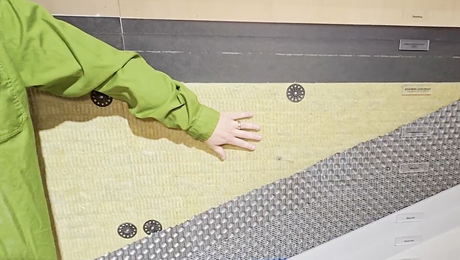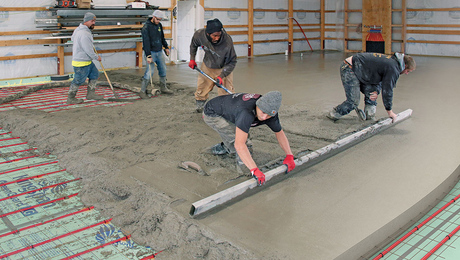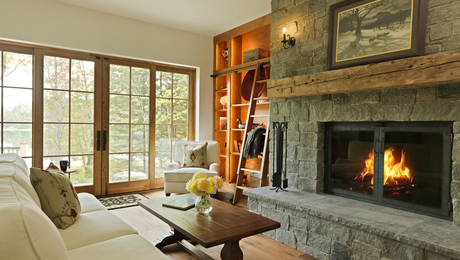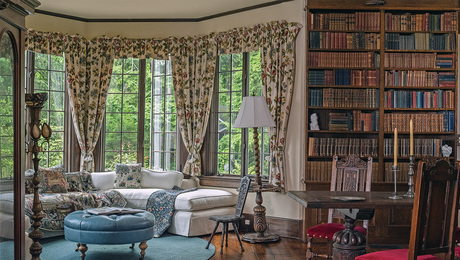Designing the Perfect Garden Gate
The gate may be decorative or provide privacy and security. Whether in wood or metal, it should complement the house.

Tucked into a fence, an arbor, a hedge, or a wall, the gate beckons us toward the entry or into garden rooms beyond. It may be purely decorative, or a discreet property marker—or it might provide privacy and even security. Garden gate designs changed with the era and from region to region. Fences and gates have a vast historical architectural vocabulary, so they are best designed starting with function. Then you can consider the material to be used, the period and style to be evoked, and the particulars of installation given climate and position in the garden. Whether in wood or metal, the gate should complement the house.
How to Choose a Garden Gate Design
Does the gate stand alone—a mere invitation in the landscape or at an arbor—or is it a hinged portion of the fence? Is it meant to obscure the view or invite the eye? Is it low, or as high as a door, or designed to be locked and impenetrable? The purpose of the gate suggests its dimensions, materials, and style. Most garden gates, though, are decorative, their only purpose to welcome or to ornament.
Even so, choosing a style may seem daunting. It’s obvious that chain link doesn’t belong in a cottage garden and rail-and-style horse fencing would look odd in a formal garden. Beyond that, so many choices are to be made, from material to size, from degree of formality to finish.

A low house, whether an early New England gambrel or a West Coast bungalow, looks good with a low wooden fence. A brick Tudor Revival does well with a metal gate between brick piers. Study the neighborhood, museum houses, and books on historic architecture to get a feel for what fences and gates were popular for various house styles and era.
Wooden Gates
In many periods and most of the country, a wooden gate is the traditional choice. Wood gates were used in Colonial Williamsburg, in front of Federal houses in New England, in rural and agrarian areas, in suburbs nationwide and in the desert Southwest. Adaptable for almost any size or style, wood gates are more affordable than other options, easier to repair, and attractive as they age. Depending on the design, wooden fences and gates can provide extra privacy and even a barrier to noise. Wood may require more maintenance than other options, such as regular staining or painting and replacement of parts that begin to rot.
Metal Gates
Various types and styles of metal gates are traditional. Think of the fanciful and famously ornate iron fences and gates of New Orleans, the finial-tipped gates in Victorian city neighborhoods, and the artful castings in bronze or iron for gates created for estates. Wrought iron is malleable enough to form into scrolls and even ornaments. Cast iron is brittle but good in compression, and rusts more slowly than wrought iron; it must be kept painted. Today’s metal gates are available in wrought iron, steel, bronze, and aluminum, each having its advantages. Metal gates will last for decades and may be the right choice if locking and security is an issue. Metal fences and gates should be professionally installed.
The Frame: A Fence or Pier
Larger gates, especially, often are attached to posts or piers of a different material. For example, a wooden gate may be let into a stone wall; a metal gate may attach to brick piers. A gate might be just one element of a structural assemblage that includes walls or screens, a roof, or seating. In other words, the gate may be the whole point of the design, not just an entry. Some gates, though, open through a “living fence” of plant material, be that trees or a hedge. These are invitations or a focal point.
 |
 |

Before Planning
Generally, a garden gate should be three to four feet tall and at least three feet wide. If it is wider than four feet, you may consider a double gate, which will require additional post support. Posts are an integral part of the design, not only aesthetically but also because they are structural and assure smooth operation. Construction specifications vary with regional climate; the posts must sink into the ground beyond the frost line, usually at least two feet deep for wood posts. Very heavy gates and those made of metal require posts to be set even deeper. Concrete footings may be recommended.
Wood posts should be of a weather- and insect-resistant hardwood, such as redwood or cedar, or of treated lumber. Be sure to allow about ¼ inch between post and gate to assure it closes well but still swings freely. The gate normally opens into the garden; the gate may swing both inward and outward with specialty hardware. Hardware such as hinges, latches, and bolts should be specified for outdoor use and it should match the heft and style of the gate.

Using Salvage
Just as an old house (or a new house designed to look established) may benefit from the use of antique and salvaged materials, so can its garden. Incorporating salvaged bits will create a unique gate, whether historical or personal. Decorative window grilles might find reuse as the swinging gate doors. Antique stone or ceramic ornament may be set into a new framework of wood or metal. Think creatively about reuse. Design a new gate around salvaged fleur-de-lys finials … use a cut-down entry door—or even a school-bus door. Save more unusual bits for back gardens. Gates near the façade are best designed and proportioned for the house.
 |
 |
 |

In designing a gate, note such details as porch trim and stair railings.
Customization at Any Budget
A custom metal gate in bronze or cast iron is a lifetime investment. Wood is less expensive and you can customize with an arbor or a design flourish at the gate. Reuse may mean just a bit of concrete work or carpentry. Paint color and statement hardware are among the most affordable ways to make the gate unique.
 |
 |
One-of-a-Kind: Salvaged bits, mixed media, ornamentation, and even standout paint color may be used to pull personal meaning and whimsy into the entryway or garden.
Selected Sources: Gates & Fences
|
|
Selected Sources: Gate Hardware
|
|
RELATED STORIES







































